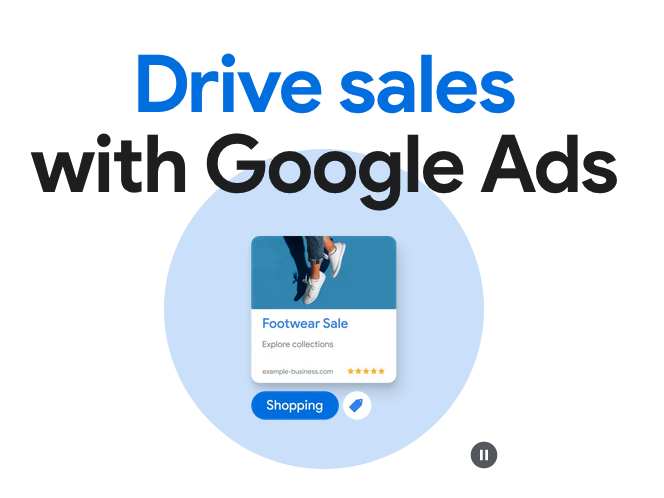In today’s digital age, Google Ads has become an essential tool for businesses to reach their target audience and drive valuable traffic to their websites. With millions of businesses competing for online visibility, crafting compelling ad copy has never been more critical. In this article, we will delve into the art of creating persuasive and engaging ad copy for Google Ads, ensuring that your ads stand out and yield exceptional results.
Understanding Your Audience

To craft compelling ad copy, the first step is to understand your target audience. Conduct thorough market research and create buyer personas to identify their pain points, desires, and preferences. Understanding your audience’s needs will enable you to tailor your ad copy to resonate with them effectively.
Utilising Strong Call-to-Action (CTA)
The power of a strong Call-to-Action (CTA) should never be underestimated. It acts as a guide for potential customers, encouraging them to take the desired action. Use action-oriented language in your CTA, such as “Buy Now,” “Subscribe Today,” or “Get a Free Trial.” The CTA should create a sense of urgency and entice users to click on your ad.
Focusing on Unique Selling Points (USPs)
Highlighting your product or service’s Unique Selling Points (USPs) sets your ad apart from the competition. Clearly communicate the benefits and advantages of choosing your brand over others. Whether it’s exceptional customer service, competitive pricing, or exclusive features, make sure your USPs shine through in the ad copy.
Using Keyword-Rich Content
Effective keyword research plays a crucial role in creating compelling ad copy. Identify relevant keywords that your target audience is likely to search for and incorporate them naturally into your ad copy. Keyword-rich content enhances your ad’s visibility and relevance, which can lead to higher click-through rates.
Crafting Engaging Headlines
The headline of your ad is the first thing that users see, so it needs to be attention-grabbing. Use power words and emotionally charged language to entice readers to continue reading. Keep the headline concise yet impactful, capturing the essence of your product or service. As one of our fellow experts, James who manages all Google Ads campaigns at Makurro , says “Headline is the most important part of the ad. Most people don’t read anything below headline”.
Addressing Customer Pain Points

Understanding your audience’s pain points and addressing them in your ad copy builds a connection with potential customers. Showcase how your product or service can solve their problems or fulfil their needs. By acknowledging their pain points, you position yourself as a problem solver, increasing the chances of conversions.
A/B Testing for Optimisation
To ensure the success of your ad campaigns, engage in continuous A/B testing. Experiment with different variations of your ad copy to see which resonates best with your audience. Test headlines, CTAs, and USPs to find the most compelling combination that drives the highest conversion rates.
Leveraging Emotional Appeal
Emotions play a significant role in decision-making, so it’s essential to tap into your audience’s feelings through ad copy. Use storytelling and emotional triggers to create a connection and evoke positive emotions, such as joy, excitement, or relief. Emotional ads often leave a lasting impact on consumers, leading to brand loyalty.
Showcasing Social Proof
Incorporating social proof into your ad copy can significantly boost trust and credibility. Display customer reviews, testimonials, or awards to showcase the positive experiences others have had with your brand. Social proof reassures potential customers that they are making the right choice by choosing your product or service.
Keeping it Concise and Relevant
While it’s crucial to provide valuable information in your ad copy, it’s equally essential to keep it concise and to the point. Avoid overwhelming the reader with excessive details. Focus on the most critical aspects that will entice them to click on your ad and learn more.
Aligning Ad Copy with Landing Pages
The ad copy and the landing page it directs to should have a seamless transition. Ensure that the information provided in the ad matches the content on the landing page. This alignment creates a cohesive user experience, reducing bounce rates and increasing the likelihood of conversions.
Monitoring and Analysing Performance

Once your ad campaigns are live, monitor their performance closely. Utilise Google Ads’ analytics and conversion tracking tools to gain valuable insights into the success of your ad copy. Analyse data regularly and make data-driven adjustments to optimise your campaigns for better results.
Creating compelling ad copy for Google Ads is an art that requires a deep understanding of your audience, strategic use of keywords, and persuasive language. By crafting ad copy that resonates with your target audience, addresses their needs, and offers unique value, you can stand out from the competition and drive meaningful results. Remember to continuously test and optimise your ad copy to stay ahead in the ever-evolving digital landscape.
Incorporate these strategies into your Google Ads campaigns, and you’ll soon witness increased click-through rates, higher conversion rates, and a more significant return on your advertising investment. To create ad copy that captivates, converts, and leaves other websites behind, embrace the power of words and the art of persuasion in your marketing efforts.

